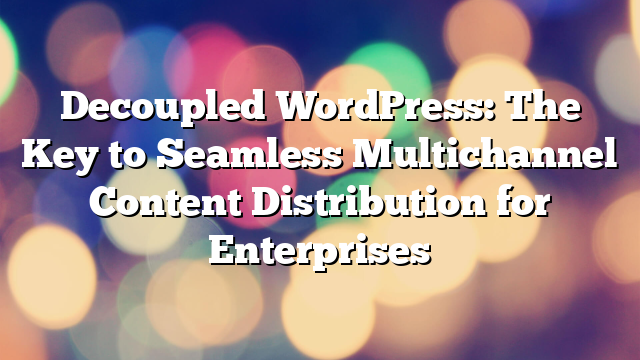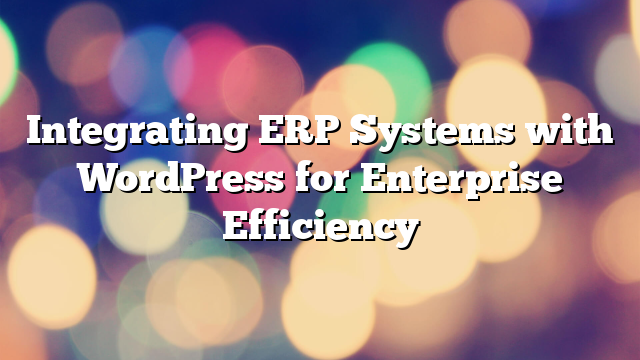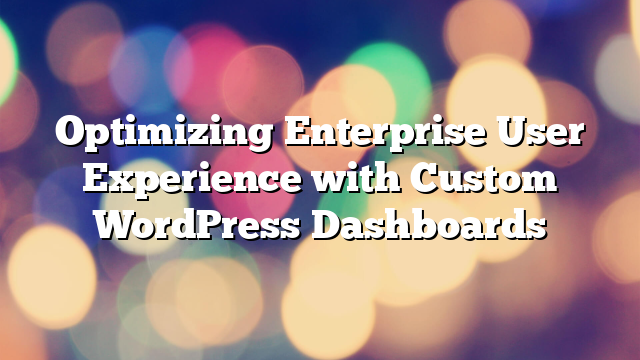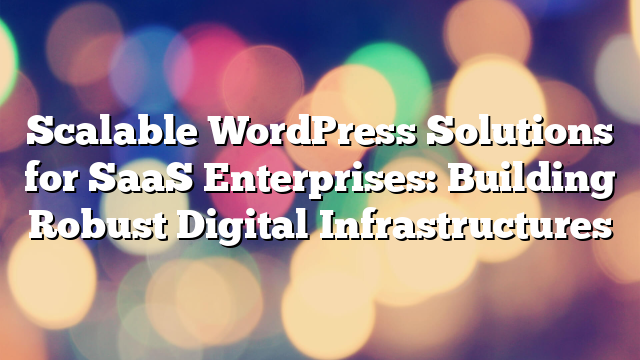Decoupled WordPress: The Key to Seamless Multichannel Content Distribution for Enterprises
10.05.2025

In the digital era, enterprises often operate across numerous channels—web, mobile apps, digital signage, smart devices, and even VR environments. Maintaining content consistency across these platforms is a major challenge. Enter Decoupled WordPress: a flexible, API-driven architecture that separates the content management backend from the frontend, enabling efficient multichannel content distribution. Let’s explore how enterprises can harness its power.
What is Decoupled (Headless) WordPress?
Decoupled WordPress (often referred to as Headless WordPress) uses WordPress solely as a backend CMS. The content is delivered via REST API or GraphQL to various frontends—such as React, Vue, Next.js, mobile apps, or kiosks—allowing for complete presentation freedom and faster performance.
Why Enterprises Choose Decoupled Architectures
Enterprises are shifting to decoupled systems for these primary reasons:
- Multichannel delivery: Push the same content to websites, mobile apps, and third-party platforms without duplication.
- Performance: Frontends built with modern JS frameworks (e.g., React/Next.js) load faster and handle more dynamic interactions.
- Scalability: Easily scale frontends independently from the backend.
- Security: Keep the CMS behind firewalls with no direct exposure to the public internet.
Use Case: Centralized Content for Global Subsidiaries
Imagine an enterprise with dozens of regional websites and mobile apps in different languages. With Decoupled WordPress, content can be centrally managed and syndicated via API to each local site and app, ensuring consistent branding and messaging globally, with local customization layered on top.
Flexible Frontend Frameworks for Tailored UX
With a decoupled setup, your frontend team isn’t limited by PHP or traditional themes. They can use:
- Next.js: Ideal for static generation and server-side rendering
- React Native: Power native apps with WordPress content
- Vue.js or Nuxt.js: Lightweight, flexible options for frontend presentation
Content as a Service (CaaS)
WordPress, when decoupled, effectively becomes a Content as a Service platform. This allows multiple departments—marketing, HR, product—to manage and distribute content through various endpoints using structured, reusable blocks.
API Integration for Custom Workflows
Using WP REST API or GraphQL, WordPress can interact with CRMs, ERPs, inventory systems, or external data sources. Enterprises can automate workflows such as:
- Publishing legal notices across all jurisdictions
- Pushing product data to web and mobile simultaneously
- Embedding WordPress-managed content inside intranets or partner portals
Enterprise-Level Challenges and Solutions
Some enterprises hesitate due to perceived complexity. But with the right strategy, challenges like authentication, caching, and versioning can be addressed using:
- JWT/OAuth for secure access
- CDNs and GraphQL clients for performance
- Content version control for safe publishing across platforms
Is Decoupled WordPress Right for Your Business?
If your enterprise operates across multiple digital platforms, values UX freedom, or requires tight performance and security controls, Decoupled WordPress may be the future-proof CMS strategy you need.
Partner with the Experts in Headless WordPress
At Vipe Studio, we help enterprise clients design and develop robust Decoupled WordPress ecosystems—from API optimization to React/Next.js frontend builds. Contact us today to explore how Headless WordPress can empower your multichannel strategy.



